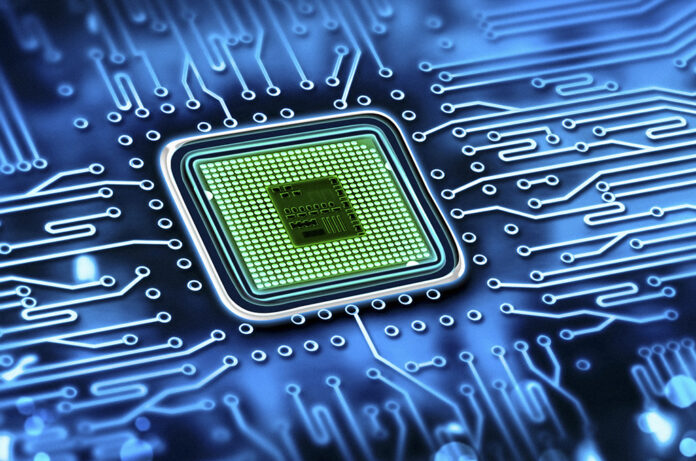Japan’s semiconductor industry has been losing ground to foreign competitors since the 1990s.
Its share of the global chip market—including related parts and materials—has declined from 50% in 1990 to 10% today, according to Ministry of Economy, Trade and Industry (METI) data.
Prime Minister Fumio Kishida’s administration considers the revival and reinvigoration of the industry to be crucial for national economic security. It wants the production of semiconductor chips made in Japan to expand threefold from 2020’s level to JPY15tn (USD104bn) by 2030.
In 2021, the government released a Strategy for Semiconductors and the Digital Industry. However, with global geopolitical tensions intensifying over the past couple of years, it revised the strategy in June to address supply-chain issues.
The strategy aims to develop and produce advanced semiconductors for emerging technologies, such as quantum computers and generative artificial intelligence.
Government Backing
The government will provide financial and other support. Design and manufacturing will also be closely coordinated with the United States.
Washington expects Japan to become a semiconductor production platform capable of partially replacing Taiwan should escalating Taipei-Beijing tensions disrupt supplies of Taiwan’s cutting-edge chips.
Japan currently produces 40-nanometer chips and above. By contrast, Taiwan dominates global production capacity for the higher-performing chips of 10 nanometers or less.
Taiwan Semiconductor Manufacturing Company (TSMC) and South Korea’s Samsung are starting to produce 3-nanometer to 4-nanometer chips. They are also developing 2-nanometer chips, as are U.S. companies IBM and Intel.
Japan’s first foundry for producing advanced semiconductors, Rapidus Corporation, was established in October by eight Japanese firms: NTT, Toyota, Sony, SoftBank, NEC, Kioxia, Denso and MUFG Bank. It intends to make 2-nanometer chips by 2027.
The government will contribute a JPY70bn subsidy for R&D and JPY260bn for a new factory for 2-nanometer chips in Hokkaido.
The launch of Rapidus was quickly followed by the establishment of the Leading-edge Semiconductor Technology Center (LSTC), a research association launched by METI, as an R&D partner. The LSTC arose from an agreement between Washington and Tokyo last year to collaborate.
Foreign Investment
In May, Kishida met with top executives of seven major semiconductor makers: TSMC, Samsung Electronics, Intel, Micron Technology, Applied Materials, IBM and imec.
He urged them to expand investment and open production bases in Japan. Responses were positive.
Japan offers relatively low geopolitical risk, generous subsidies and a weak yen, making it attractive to foreign investors.
Some have already shown interest:
- TSMC is building a semiconductor plant in Kumamoto prefecture to produce semiconductors in the 10-nanometer to 20-nanometer range. The government has pledged JPY476bn in support.
- Micron is expanding its plant in Hiroshima prefecture.
- IBM and Belgium’s IMEC are partnering with Rapidus. Imec plans to open a Japanese R&D centre.
- Samsung plans to build a JPY30bn production line for a prototype chip in Yokohama, supported by JPY10bn of Japanese government subsidies.
Export Controls
In line with Washington, Tokyo increasingly looks to protect key technologies and limit exports of products with potential military use. METI added 23 items of such equipment in May to its list of regulated exports.
From July 23, Japanese exporters will require licenses from METI, decided on a case-by-case basis.
The overall effect on Japanese exporters will be insignificant in the short term. The regulations are limited to the equipment used to make advanced semiconductors of 14 nanometers or less. The 14-nanometer chip is the most advanced chip category China can produce.
The new rules will affect only about 10 Japanese equipment producers to some degree.
Heeding industry lobbying, Tokyo stopped short of imposing broad restrictions similar to those adopted by the United States last year.
Japan accounts for about 35% of the global supply of semiconductor manufacturing equipment, and 40% of its exports are China-bound.
While the Japanese government will restrict China-bound exports of tools needed to produce cutting-edge chips, the Chinese market will remain crucial for Japanese exporters of the machinery used to manufacture standard chips.
Tokyo will want to avoid semiconductor-related political confrontation with Beijing and minimize any adverse effects on its businesses of its export restrictions.
China’s Ministry of Commerce has criticized Japan for abusing export control measures. “Spontaneous patriotic” boycotts by Chinese buyers are a perennial risk.
Equities Boost
The new strategy has already boosted Japanese semiconductor companies’ stock prices, as has the perceived threat to supplies from Taiwan arising from geopolitical tensions.
Beneficiaries include Advantest, a semiconductor testing equipment manufacturer; Screen Holdings, a chipmaking equipment manufacturer and Renesas Electronics, a chipmaker focused on the auto industry.


